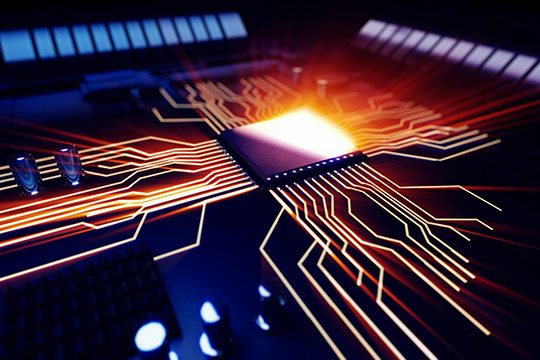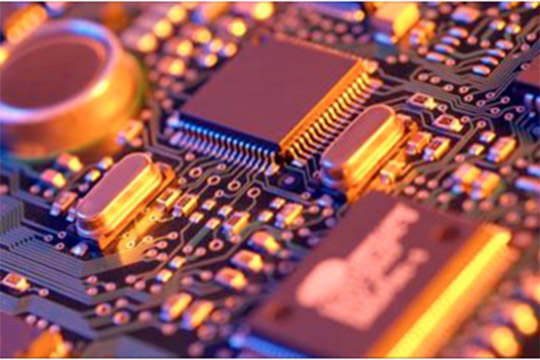TECHNOLOGY FOCUS
The RF-Microwave technology has transformed from using basic transistors to higher level Monolithic Microwave Integrated Circuit (MMIC) modules. The modules in addition to containing an array of semiconductor devices typically have built-in bias circuits and matching networks. This transforms the initial engineering design activity to a higher functional level, resulting in a more productive effort.
The primary focus of the course is to develop the techniques for choosing modules for RF-Microwave Power Amplifiers that are consistent with the higher-level system specification, understanding the module interface issues, choosing the best power combining techniques and discussing the interaction of respective design and next higher assembly.


COURSE CONTENT
This course presents all aspects of the design of Microwave Power amplifiers using MMIC modules.
Part 1: Useful and Applicable Microwave Design Concepts
- RF-Microwave modeling of passive parts
- Transmission line concepts and topologies
- Circuit Matching and VSWR
- Noise in Microwave circuits
- Non-Linear signal distortion
Part 2: Designing the Microwave Power Amplifier
- Defining the Output Power Requirements of a Communication Link
- Designing Parallel Amplifier Topologies to Meet System Requirements
- Selecting Parallel Amplifier Modules
- Measuring and Matching the Impedance of High-Power Amplifier Modules
- Power Amplifier Chain Analysis
Part 3: Designing the Power Amplifier System
- RF Signal Monitoring Circuits
- DC Power Interface with the RF Signal Path
- Thermal Design and Reliability
- Electromagnetic Compatibility (EMC)
WHO SHOULD ATTEND
This course focuses on the design of power amplifiers using MMIC modules but discusses many other microwave engineering topics related to a wide array of other assemblies.
The subject matter would be of interest to:
- Engineers, technical staff and engineering managers involved in the design of microwave subassemblies and systems.
- Business development personnel

Useful Microwave Design Concepts
The design of Microwave power amplifiers and most other microwave sub-assemblies require the use of discrete parts, distributed transmission line functions and semiconductor devices. An understanding of the high frequency models of these devices is an important factor that should be considered to ultimately arrive at a successful design. The major topics are:
- Introduction
- Lumped Components in RF and Microwave Circuitry
- Transmission Line Characteristics
- S-Parameters
- Microstrip Transmission Line
- Effects of non-ideal circuit Matching and VSWR
Analyzing Noise, Non-Linearity and Dynamic Range of a Cascade of Devices
Every system and sub-system typically are made up a cascade of functions. Every function is non-linear, and every function adds noise or decreases signal. Successfully designing a series of modules or sub-systems requires knowledge of signal dynamic range such that the nonlinear distortion and added noise are within acceptable levels defined by the final system requirements. The major topics are:
- Noise in Microwave Circuits
- Non-Linear Signal Distortion
- Calculating the Dynamic Range of a Cascade of Modules or Functio
Designing the Power Amplifier
The power amplifier is a key function in any system. The design of the power amplifier could take many paths depending on the overall system application. The steps to a successful design are to define the specifications, determine the available devices and design the input, output, DC power and device interstage interface.
- Power Amplifier Requirements of a Communications System
- Power Amplifiers for RADAR Systems
- MMIC Amplifier Modules Selection
- DC Power and Bias for FET Based MMIC Power Amplifier Devices
- Measuring and Matching the Impedance of High Power MMIC Amplifier Modules
Parallel Amplifier Topologies
Many times, the output power amplifier requirements are beyond the capability of a single device. This issue is typically overcome by Combining parallel power amplifier channels. It is necessary to analyze the available parallel amplifier topologies to determine the optimal design for the application.
- Analyzing the Solid-State Power Amplifier (SSPA) topology
- Factors to consider in Selection of Power Dividers and Combiner
- Analyzing Parallel Amplifier Topologies
- Chain Analysis of Linear and Saturated Power Amplification Systems
Designing the Power Amplifier System
As the power amplifier is part of a larger unit it is must be designed for system compatibility as the system must be designed compatible with the power amplifier. There are many facets to compatibility, but this section focuses on the design of electronic and electro-mechanical structures.
- RF Signal Monitoring Circuits
- DC Power Interface with the RF Signal Path
- Issues with DC Voltage and Current
- Thermal Design and Reliability
- Electromagnetic Compatibility (EMC)
Howard Hausman has written a text that is a recommended reference. The reference is not required for this course.
Title: “Microwave Power Amplifier Design with MMIC Modules”
by Howard Hausman, 2018 ISBN: 9781630813468 Published by Artech House
Boston, MA USA & London, UK
Students may order the book over the Artech House website, http://www.artechhouse.com

